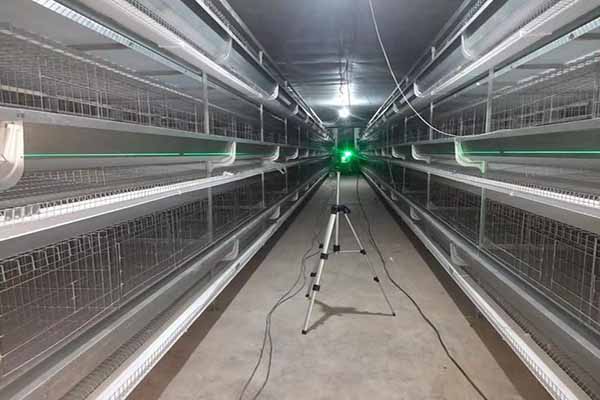How to Start a Chicken Farm in Sri Lanka: A Comprehensive Guide
Time : 2025-06-27
Introduction
Starting a chicken farm in Sri Lanka can be a rewarding endeavor, providing fresh poultry products and contributing to the country’s food security. This guide will help you navigate through the essential steps to start a successful chicken farm, with a focus on the use of professional poultry equipment.
Market Research and Business Plan
Before embarking on the journey of starting a chicken farm, thorough market research and preparation of a comprehensive business plan are crucial. This section will provide insights into these key initial steps.
Market Research
1. Understand the Market: Research the local demand for chicken products. Identify potential customers and analyze the competition in your target market.
2. Analyze Consumer Preferences: Investigate consumer preferences, including breed preferences and the quality of poultry products they seek.
3. Evaluate the Feasibility: Analyze the feasibility of your chicken farm, considering factors like geographical location, climate, and proximity to suppliers and consumers.
Business Plan
1. Define Your Business: Clearly outline the objectives, vision, and mission of your chicken farm.
2. Develop Strategies: Establish strategies to achieve your business goals, including marketing, finance, and operations.
3. Prepare Financial Projections: Estimate your startup costs, ongoing expenses, and expected revenue for the first few years.
Choosing the Right Breed
Selecting the appropriate chicken breed for your farm is vital for the success of your business. Different breeds have varying productivity levels, growth rates, and adaptability to local conditions.
Top Chicken Breeds in Sri Lanka
1. Red Jungle Fowl: Native to Sri Lanka, this breed is known for its hardiness and resistance to diseases.
2. Lahore Local: Highly productive in terms of egg-laying, the Lahore Local breed is popular in Sri Lanka.
3. Brown Leghorn: A high-yielding breed that is widely used for commercial egg production.
Acquiring Land and Facilities
Choosing the right location and constructing appropriate facilities are essential for a successful chicken farm. This section will discuss the key considerations for land acquisition and facility setup.
Land Acquisition
1. Location: Select a location that offers easy access to markets, suppliers, and transportation facilities.
2. Size: Ensure that the land is spacious enough to accommodate all the necessary facilities, including pens, brooders, and equipment storage.
3. Soil and Water: Assess the quality of the soil and availability of water resources for irrigation and livestock.
Facility Setup
1. Chicken Pens: Construct well-ventilated pens to house the chickens, ensuring they are comfortable and protected from predators and diseases.
2. Brooders: Use brooders for chicks until they reach a suitable age for moving into the main pens.
3. Equipment Storage: Allocate space for storing professional poultry equipment and supplies.
Investing in Poultry Equipment
Professional poultry equipment is essential for the efficient management of your chicken farm. This section will provide an overview of the key equipment required for a chicken farm.
Must-Have Poultry Equipment
1. Feeding Systems: Automated feeders, waterers, and feed storage bins.
2. Heating Systems: Brooders for chicks, as well as heating pads or infrared lamps for additional warmth during cold seasons.
3. Ventilation Systems: Fans, ventilators, and curtains to maintain optimal temperature and air quality.
4. Lighting Systems: Specially designed lighting fixtures to provide adequate illumination for chickens.
5. Health Monitoring Equipment: Thermometers, scales, and other devices to monitor the health and well-being of your poultry.
Farming Practices and Management
Implementing effective farming practices and managing your chicken farm efficiently are crucial for maintaining productivity and reducing costs.
Feeding and Nutrition
1. Proper Diet: Provide a balanced diet tailored to the needs of your chickens at different growth stages.
2. Water Quality: Ensure that the water supply is clean and free of contaminants.
3. Feed Management: Store feed in a cool, dry place and avoid over-feeding to prevent wastage.
Health Management
1. Regular Vaccinations: Implement a vaccination program to protect your chickens from diseases.
2. Sanitation: Maintain high standards of hygiene by regularly cleaning pens and equipment.
3. Disease Monitoring: Keep an eye out for signs of illness and consult a veterinarian if necessary.
Marketing and Distribution
Effective marketing and distribution strategies are vital for ensuring the success of your chicken farm. This section will provide guidance on how to promote your products and find the right channels for distribution.
Marketing Strategies
1. Brand Building: Create a strong brand identity that reflects your chicken farm’s values and quality products.
2. Direct Sales: Engage with local restaurants, hotels, and grocery stores to establish direct sales channels.
3. Online Marketing: Utilize social media platforms and e-commerce websites to promote your products and reach a wider audience.
Distribution Channels
1. Local Markets: Participate in local markets and farmers’ markets to showcase your products and connect with customers.
2. Wholesale: Explore opportunities for selling your chicken products to wholesalers or distributors.
3. Export: Investigate the potential of exporting your poultry products to other countries.
Conclusion
Starting a chicken farm in Sri Lanka requires careful planning, research, and investment. By following this comprehensive guide, you will be well-equipped to create a successful and profitable chicken farm, contributing to the nation’s food security and economic growth.
Tags












